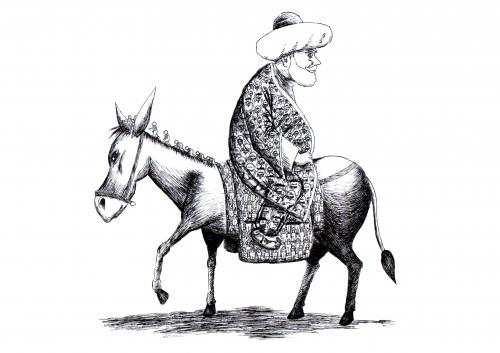When the crowd of pilgrims at Athens walked the Sacred Way to Eleusis to celebrate the Mysteries, a donkey carried a basket containing the sacred paraphernalia which would be used to create the idol of Dionysus, while the crowds shouted the praises of Dionysus and waved bundles of branches. In this way, like Jesus entering Jerusalem, Dionysus rode in triumph to his death.
The mythical motif of "riding on a donkey" is often taken as a sign of humility. It also has a more mystical meaning, however. To the ancients the donkey typified lust, cruelty and wickedness. It symbolically represented the lower "animal" self which must be overcome and subdued by an initiate of the Mysteries. Lucius Apuleius wrote a story called "The Golden Ass", which was an allegorical tale of initiation. In it Lucius is transformed into a donkey through his own foolishness and endures many adventures which represent stages of initiation. At his final initiation he is transformed back into a human being. This story is symbolic of the initiate being overcome by his lower nature and then, through initiation into the Mysteries, rediscovering his true identity ...
A favourite representation of afterlife sufferings in the Underworld was the figure of a man condemned to forever plait a rope which his donkey continually eats away, symbolic of the lower self constantly trying to eat away the spiritual achievements of the Higher self, i.e. the uninitiated never reach consummation. The figure of the godman riding in triumph on a donkey symbolized that he was master of his "animal" nature.

